Roundup: August Public Transit Chatter
August 21, 2019
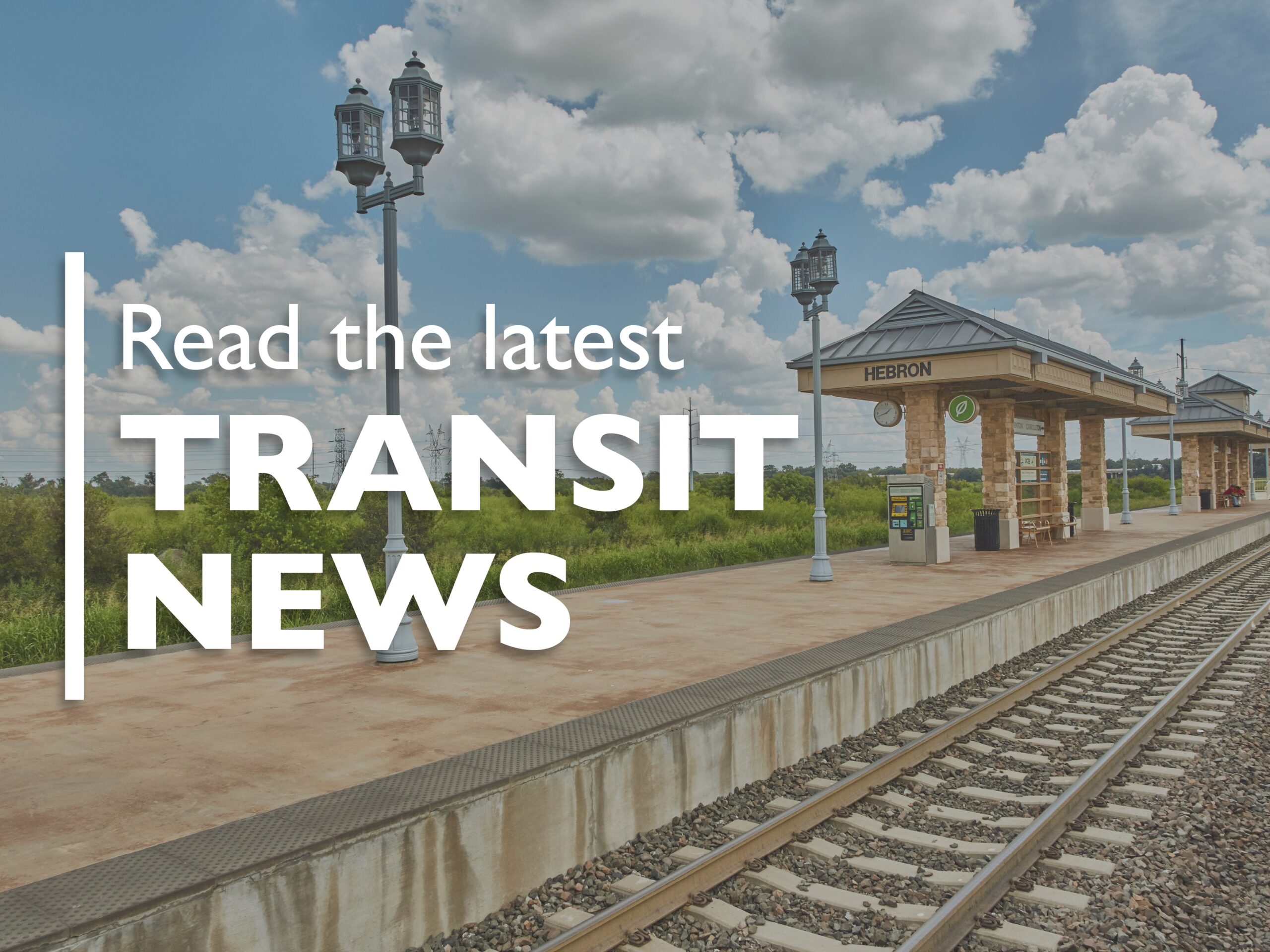
Saying goodbye to summer is never easy! However, the silver lining is that fall is just around the corner bringing cooler temperature and a beautiful change in scenery. Speaking of change, there are a lot of new transit projects happening right in our backyard and around the world that is changing how we view mobility! From hyperloop pods to autonomous flying shuttles, check out our top stories we’ve rounded up for you to be in the know this month:
Virgin Hyperloop One’s pod road tour makes a pit stop at AT&T Stadium
Earlier this month, a Virgin Hyperloop One XP-1 hyperloop pod rolled into Arlington, TX for a two-day visit at AT&T Stadium as part of a summer roadshow so the public can see tomorrow’s transportation technology today. The Dallas Cowboys and the North Central Texas Council of Governments (NCTCOG) – a regional entity that steers policy and government funds for transportation projects across North Texas – partnered with Virgin Hyperloop One on the recent visit.
The pod, which can reach speeds of nearly 700 mph, is the vehicle that passengers will ride in through a vacuum-sealed tube. Virgin Hyperloop One has been testing the technology at a site in the Nevada desert.
Last year, The Dallas-Fort Worth Transportation Council said it would explore Hyperloop technology for a high-speed corridor between Dallas, Arlington and Fort Worth. It also said it would undertake a feasibility study on a Hyperloop for a longer Fort Worth to Laredo Corridor.
What do your thoughts on this new mobility option? Do you think this can be the “transit of the future”?
Autonomous flying shuttles getting ready to take to the skies
China’s EHang, a company focused on developing and deploying autonomous passenger and freight low-altitude vehicles, will build out its first operational network of air taxis and transports in Guangzhou for pilot trials that will focus on showing how a low-altitude aircraft can make sense for use in cities and how an entire network of them can operate in concert, controlled and monitored by a central traffic management hub.
The company announced that the Chinese city would play host to its pilot location for a citywide deployment. EHang, which was chosen at the beginning of this year by China’s Civil Aviation Administration as the sole pilot company to be able to build out autonomous flying passenger vehicle services, has already demonstrated flights of its EHang 184 vehicles carrying passengers in Vienna earlier this year and ran a number of flights in Guangzhou in 2018.
There are many benefits of such a network for cities like Guangzhou where rapid growth has led to plenty of traffic and high density at the ground level. It also could potentially have advantages over a network of autonomous vehicles, as those still have to contend with ground traffic, pedestrians, cyclists and other vehicles in order to operate, while the low-altitude air above a city is less congested.
If this were happening here in our North Texas backyard, would you give it a go?
Self-driving cars more of a distant reality which may be better for us all
We’re sure you’ve heard the non-stop chatter for the past few years of autonomous vehicles and how they would help solve every problem of urban mobility and be in operation across the country sooner than you could imagine. Below were recent predictions of self-driving vehicles from industry giants:
- In 2012, Google CEO Sergey Brin said autonomous vehicles would be a reality for “ordinary people” within five years.
- In 2016, Uber CEO Travis Kalanick promised to get rid of human drivers in four years’ time.
- In 2017, a BMW board member told a conference crowd that the company’s slogan, “The ultimate driving machine,” would be obsolete by 2020.
All these expert opinions have been turned upside down with the recent 2018 Nature article by MIT scientists who deflated the hype entirely, concluding that “some form of human intervention will always be required.” The unique challenge of autonomous vehicles is that, although they may be safer than human drivers in the future, they could be far less safe in the present.
Many mobility and transit experts believe that solving the technical challenges of self-driving cars is the easy part. The more difficult question concerning the viability of autonomous vehicles in U.S. cities is whether their residents want them at all. Concerns over safety is a major issue for residents which can bring a lack of funding and political courage for autonomous vehicles to move forward in many cities across the country.
Have a question or comment about one of the stories we featured, or is there a big headline you think we should have included? Leave your comment below. We’d love to hear from you!
More News to Use
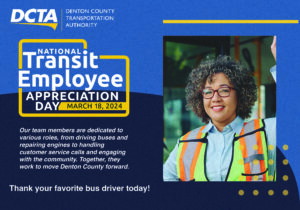
Happy National Transit Employee Appreciation Day!
March 18, 2024
Join Denton County Transportation Authority in celebrating National Transit Employee Appreciate Day, March 18, 2024! Every year, DCTA celebrates bus and rail operators for their endless dedication and commitment to serving Denton County. This year, we are extending.

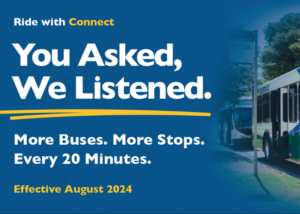
Upgrades coming August 19th – More Buses. More Stops. Every 20 minutes.
August 30, 2024
Upgrades coming August 19th will provide even more convenience for those taking the Connect Bus—all with the same excellent customer service you’re used to. If you are using our GoZone services between 7 AM and 9 PM, and.

Sign up for Updates
"*" indicates required fields









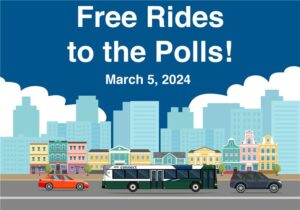
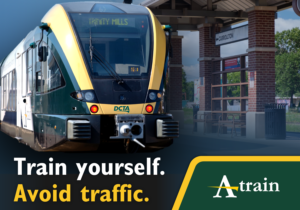

 Follow us on Twitter
Follow us on Twitter